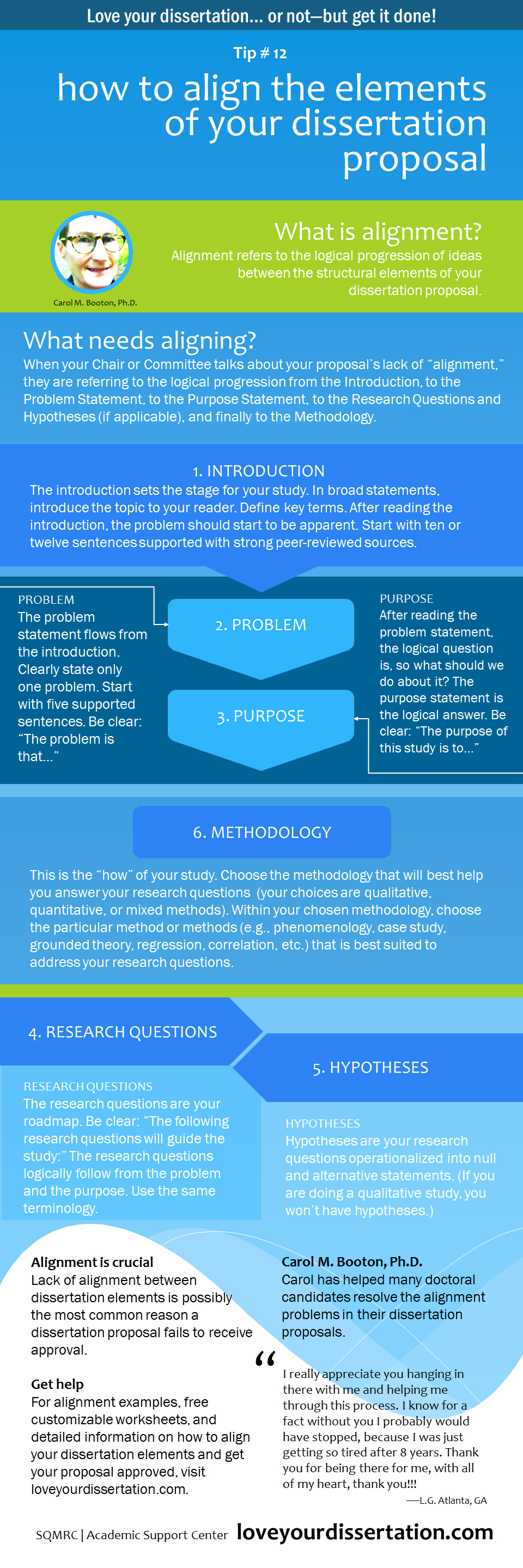How to align the elements of your dissertation proposal
Alignment refers to the logical progression of ideas between the structural elements of your dissertation proposal. When your Chair or Committee talks about achieving “alignment,” they are referring to the logical progression from the Introduction, to the Problem Statement, to the Purpose Statement, to the Research Questions and Hypotheses (if applicable), and finally to the Methodology. Lack of alignment between dissertation elements is possibly the most common reason a dissertation proposal fails to receive approval.
Download the pdf of the PowerPoint: How to align the elements of your dissertation proposal
You may have other sections in your proposal—for example, a section about the significance of your study, the nature of your study, background, key terms, etc. Focus on the main elements that form the backbone of your study. Once all the foundation pieces are in alignment, you will find your study is much more manageable.
Click here for the infographic.
INTRODUCTION
The introduction sets the stage for your study. In broad statements, introduce the topic to your reader. Define key terms. After reading the introduction, the problem should start to be apparent. Start with ten or twelve sentences supported with strong peer-reviewed sources.
PROBLEM
The problem statement flows from the introduction. Clearly state only one problem. Start with five supported sentences. Be clear: “The problem is that…”
- Specify just one problem.
- Situate the problem in the literature.
- Differentiate the problem from the broader topic.
PURPOSE & METHODOLOGY
After reading the problem statement, the logical question is, so what should we do about it? And how should we do it? The purpose statement is the logical answer. Choose the methodology that will best help you answer your research questions (your choices are qualitative, quantitative, or mixed methods). Be clear: “The purpose of this study is to…”
RESEARCH QUESTIONS
The research questions are your roadmap. Be clear: “The following research questions will guide the study…” The research questions logically follow from the problem and the purpose. Use consistent terminology.
HYPOTHESES
Hypotheses are your research questions operationalized into null and alternate statements. (If you are doing a qualitative study, you won’t have hypotheses.)


